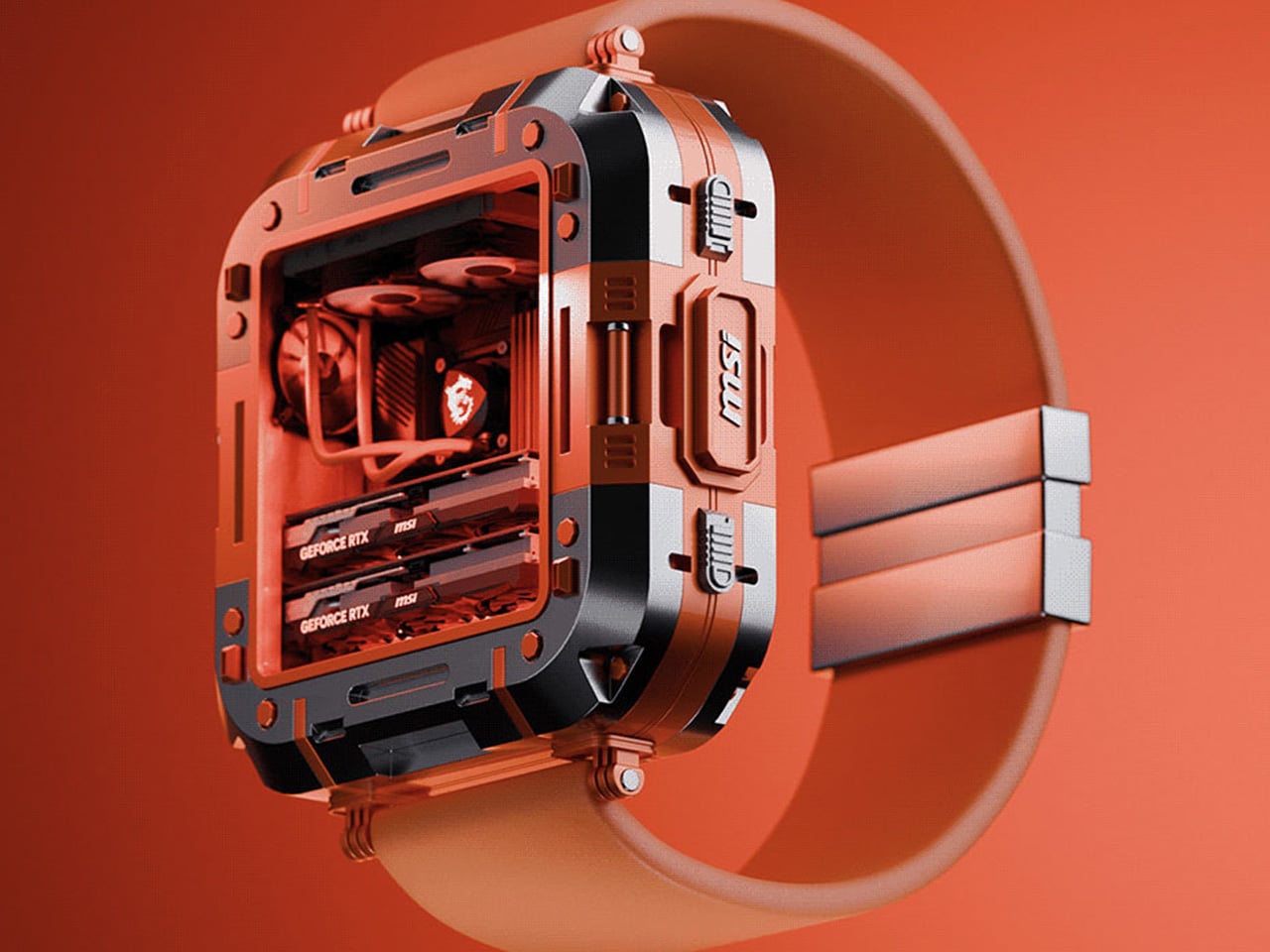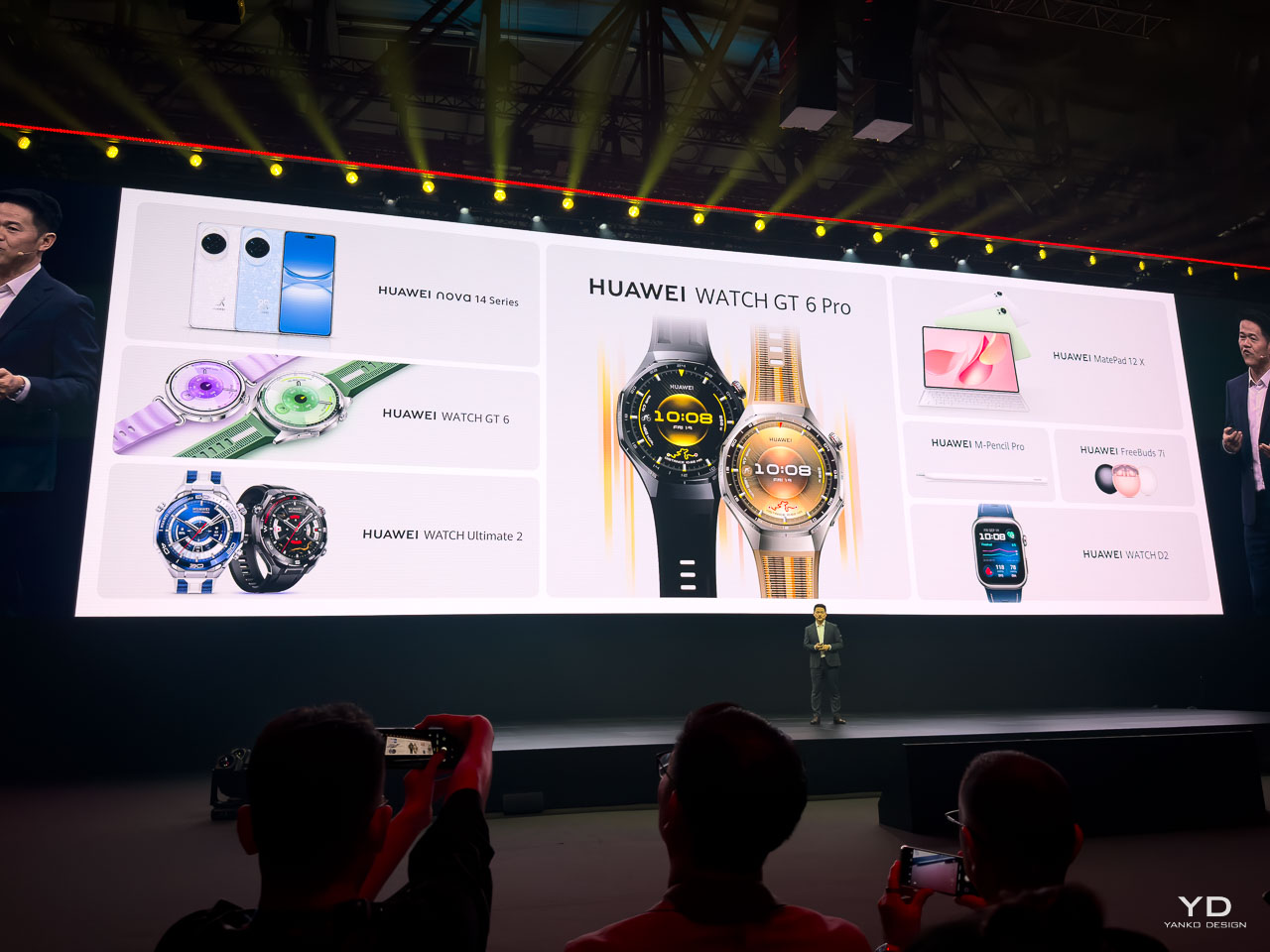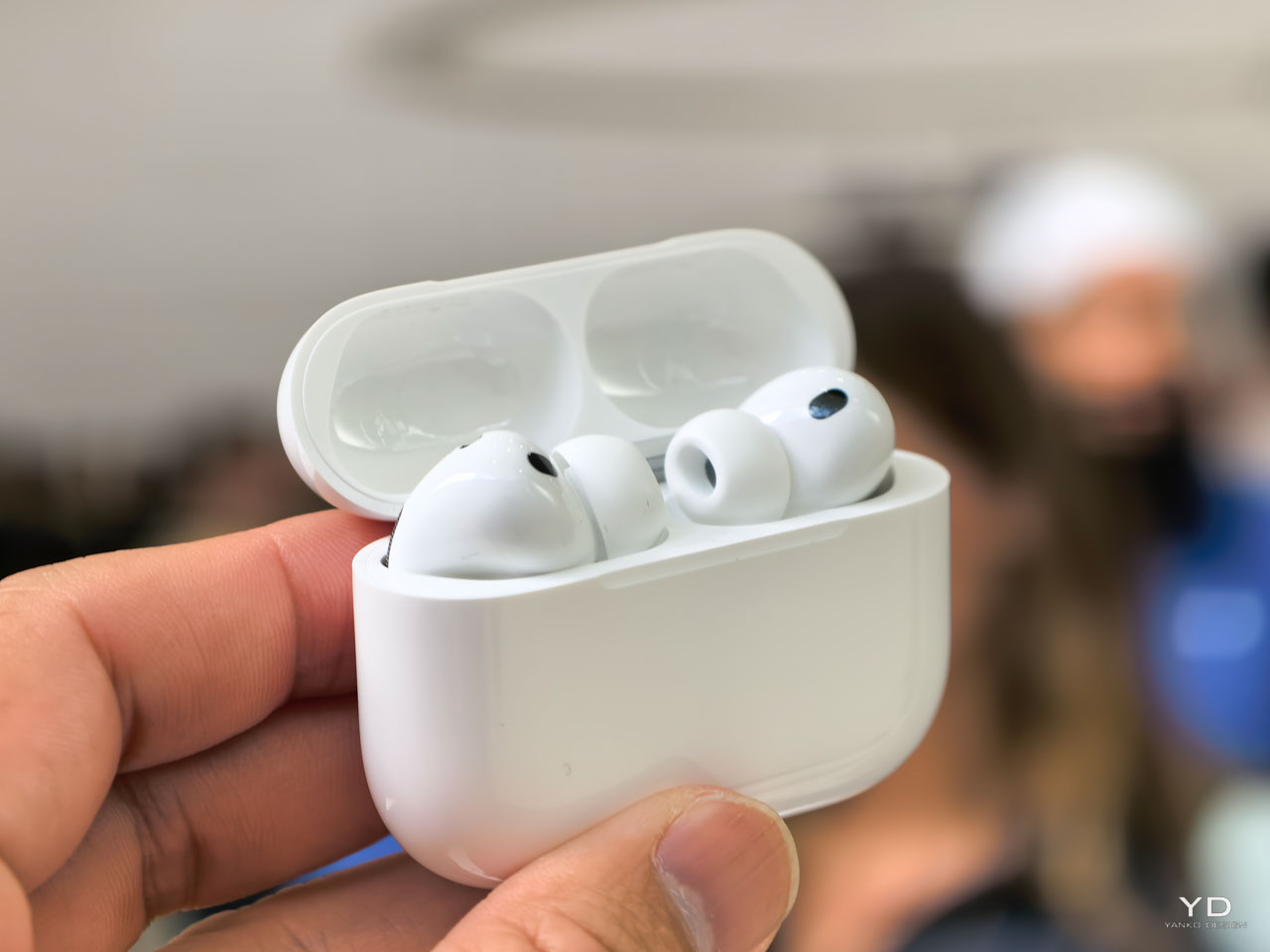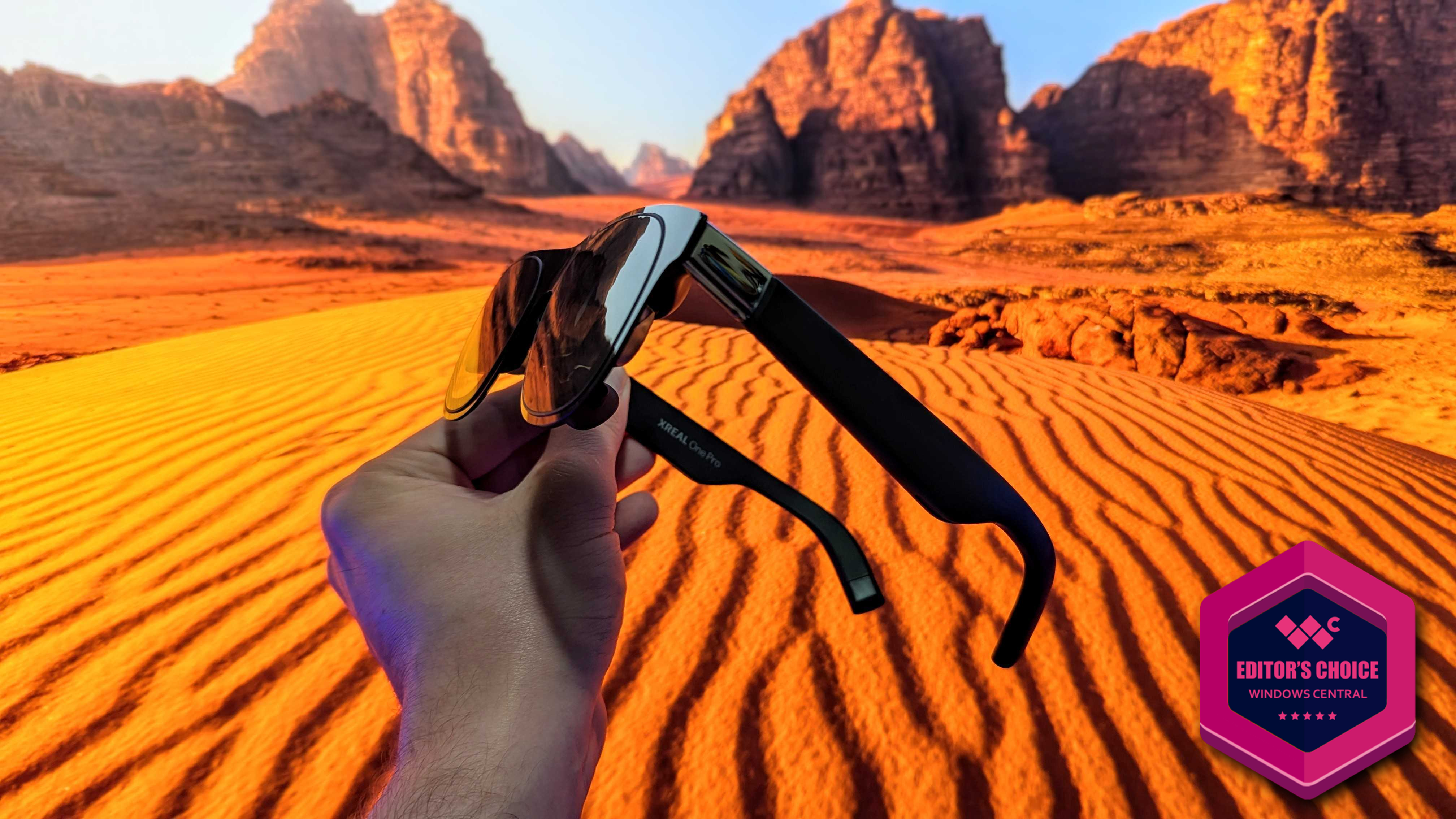
At Paris’s Vélodrome National, Huawei staged its most ambitious ecosystem showcase to date. The event focused on an interconnected lineup of wearables, smartphones, tablets, audio, and creative software. The strategy challenges Apple’s ecosystem advantage while addressing gaps competitors have not resolved.
Designer: Huawei
Huawei reports 200 million wearable shipments worldwide and cites the number one global position in wrist-worn devices during the first half of 2025. The GT Series alone has shipped 54 million units. These totals frame why Huawei sees itself as a category leader.

Consider a cyclist who needs real-time power data without expensive meters, a diver 40 meters down losing buddy contact, a creator editing 4K footage on location, someone requiring medical-grade blood pressure monitoring, or an artist who wants PC-level tools on mobile. This Paris showcase addresses each scenario with technology that stretches what consumer electronics can do.
Revolutionary Technology Addresses Real-World Problems
This launch connects breakthrough innovations across product categories to solve problems competitors have not addressed. The Watch GT 6 Pro introduces what Huawei describes as an industry-first virtual cycling power system that calculates real-time output without external power meters. According to Huawei, more than 1,000 wind tunnel experiments informed resistance models for varied riding scenarios. Riders enter basic inputs, including bike weight and body weight, then see power data in real time.


The Ultimate 2 debuts what Huawei positions as a sonar-based underwater messaging system. Divers can exchange preset messages at depths up to 30 meters, which addresses a safety gap that traditional dive computers do not solve. The system allows pairing with up to 50 diving buddies before descent, with preset message capability once underwater. During emergencies, pressing the upper left button sends an SOS alert that propagates through nearby watches, creating a multi-point safety network extending coverage beyond the initial 30-meter range through relay capabilities.


The Watch D2 offers 24-hour ambulatory blood pressure monitoring that Huawei says is certified by TÜV Rheinland. The goal is clinical-grade accuracy in a consumer device. Users can set up to 10 separate reminders per day or configure multiple consecutive measurements within custom time periods with 30 or 60-minute intervals. PulseWave Arrhythmia Analysis provides continuous heart health monitoring in the background, while a new emotional well-being indicator adds mental health tracking.
Complete Wearables Portfolio: Four Watches Targeting Every User
Watch GT 6 Pro: Professional Sports Authority
The GT 6 Pro keeps the octagonal design and adds a 3D bezel for dynamic highlights. The 1.47-inch AMOLED reaches 3,000 nits peak brightness, a 150 percent improvement for sunlight visibility. Aerospace-grade titanium with a hard coating improves scratch resistance. IP69 and 5ATM ratings support high-pressure water jets and swimming. Do not use these ratings to imply scuba diving.

Battery life reaches up to 21 days with light use and about 12 days in typical use. High-silicon batteries increase energy density by 37 percent. Trail running mode runs up to 40 hours, a 67 percent increase. Golf integration includes over 17,000 courses worldwide with precise distance measurements between 82 points.

The watch features the new Huawei Sunflower positioning system with 20% enhanced accuracy and introduces the 32G IMU sensor for improved fall detection. Sports capabilities span skiing (three modes including snowboarding and cross-country), running with real-time form analysis, and golf with half-scoring after each ninth hole.

Watch GT 6: Emotional Intelligence for Mainstream Users
The standard GT 6 focuses on comprehensive health monitoring with emotion detection capability. According to Huawei, the watch can intelligently detect and record three different emotional states with upgraded emotional well-being features compared to previous generations. Over 100 animated “PatWatch” faces provide instant mood enhancement, while guided breathing exercises offer relaxation support.

The 41mm model features adjustable loop lugs for smaller wrists, with a rounded bezel and numbered scales creating a sleeker appearance. The purple corrugated strap combines fashion with all-day comfort, available in five color options for personalization. Construction uses 316L stainless steel that balances durability with lightweight comfort for daily wear.

 Watch Ultimate 2: Extreme Adventure Technology
Watch Ultimate 2: Extreme Adventure Technology
The Ultimate 2 represents Huawei’s direct challenge to the Apple Watch Ultra’s adventure positioning. According to Huawei, the octagonal hollow design uses zirconium-based liquid metal construction with enhanced hardness coating that triples case durability compared to previous generations. The 3,500 nit LTPO display ensures visibility in conditions where Apple Watch Ultra users struggle with screen readability.

Huawei describes a re-engineered antenna that uses the case as a booster for NFC payments, eSIM calls, and navigation in weak-signal areas. The company claims improved route precision versus competing outdoor watches. Independent testing will need to confirm this. Battery performance reaches 4.5 days with all features active, extending to 11 days in battery saver mode. For context, Apple Watch Ultra delivers 36 hours with intensive use, making Huawei’s claims significant if validated.

Golf integration spans over 70,000 course maps worldwide with AI caddy functions providing club suggestions and green slope directions. Camera control supports Insta360 and DJI devices with simple double-tap commands, transforming activity stats into dynamic video stickers for sports like hiking, biking, snowboarding, diving, and skiing. This ecosystem integration directly targets adventure content creators who find Apple Watch camera controls limited.



The X-TAP all-in-one sensing system combines ECG, PPG, and tactile sensors positioned on both the side and back of the watch for what Huawei describes as faster, more comprehensive health monitoring than competing devices. At high altitudes, real-time fingertip SpO2 measurement helps guard against altitude sickness risks that traditional wrist-based sensors may miss. AI noise reduction using an NPU earned the highest five-star certification from SGS, ensuring crystal-clear calls in wind and noise conditions where other smartwatches fail. Huawei positions these capabilities as superior to Apple Watch Ultra’s more basic health sensors and communication features.
Smartphone Innovation: Nova 14 Series Redefines Mobile Photography
Nova 14 Pro: Ultra Chroma Camera System Breakthrough
The Nova 14 Pro introduces Huawei’s first Ultra Chroma Camera system with a 50MP RYYB sensor and physical variable aperture. According to the company, color restoration accuracy has increased by 120%, with spatial resolution improvements exceeding 100,000 times compared to traditional smartphones. The XD Portrait Engine uses advanced algorithms to optimize portrait photography across multiple zoom levels.

The front camera system features a 50MP ultra portrait dual camera delivering 5x digital zoom and 2x optical zoom. Huawei’s industry-exclusive zoom technology provides 0.8x to 5x range effortlessly, while the industry’s first front ultra-speed snapshot captures falling objects with remarkable clarity. Three built-in portrait themes – Natural, Delicate, and Stylish – offer immediate customization options.
The ultra-thin 7.78mm body features curved edges in Pure White, Crystal Blue, and Classical Black colors. The 6.78-inch quad-curve display supports 120Hz adaptive refresh rate, powered by a 5,500mAh battery with 100W SuperCharge Turbo. AI capabilities include Best Expression for post-capture facial adjustments and AI Remove for unwanted element elimination.

Advanced AI features extend beyond photography to interactive experiences. Lock screen games include Emoji Cross for bouncing emojis and AirHoop for gesture-controlled basketball shooting. AI messaging hides content when someone peers over shoulders, while exclusive AI gesture control enables touchless operation – scrolling videos while cooking or capturing screenshots by grabbing air.
Nova 14: Mainstream Excellence with Premium Features
The standard Nova 14 achieves even greater thinness at 7.18mm while maintaining the same 5,500mAh battery and 100W fast charging as the Pro model. The 6.7-inch OLED flat-edge display supports 120Hz refresh rates with intelligent adjustment capabilities down to 20Hz for battery optimization.
Camera upgrades include a 50MP RYYB ultra-vision main camera, telephoto lens, and ultra-wide macro camera system. The adaptive multifocal dual flash captures perfect moments in challenging lighting conditions, while maintaining color consistency across zoom ranges from 1x to 10x magnification.
Professional Tablet Computing: MatePad 12X Brings PC-Level Capabilities
The MatePad 12X features a pearlescent finish with seamless all-metal body construction, available in elegant green and pristine white colors. At 5.9mm thickness and 555g weight, it achieves ultra-portable dimensions while maintaining professional capabilities that directly challenge iPad Pro dominance in creative markets.

The upgraded paper matte display uses high-precision nanoscale etching technology, reducing sparkle by 50% compared to previous generations. The 12-inch LCD panel delivers 1000 nits peak brightness with 140Hz refresh rate, featuring an 88% screen-to-body ratio and 3:2 aspect ratio optimized for productivity workflows.
Huawei Notes includes AI handwriting enhancement and note replay functionality, synchronizing written notes with audio recordings for comprehensive meeting capture. PC-level video editing capabilities, developed in partnership with Phil Mora, enable professional content creation on mobile. The new drawing feature allows animation creation directly on video tracks using the M-Pencil Pro.

Performance improvements reach 27% better than previous models through enhanced hardware and more efficient cooling systems. Wi-Fi 7 connectivity provides enhanced stability for gaming and live streaming, while the large battery supports 66W supercharge capability. Live multitask features unlock interactive touch controls for editing and office tasks.

M-Pencil Pro: Professional Creative Tool Revolution
The M-Pencil Pro incorporates over 300 precision components with advanced pressure sensors detecting subtle touch variations. The premium tip features three layers – nickel, gold, and platinum – for premium tactile feedback that rivals professional art tools. Three interchangeable pen tips serve different creative needs.
Gesture control enables pinch-to-open radial menu access, while the embedded micromotor provides subtle vibration feedback confirming commands. The quick button launches preset favorite applications with single presses. Nearlink technology ensures accurate stroke translation, while the innovative rotate gesture automatically aligns brushes with stylus tilt and rotation for authentic artistic expression.
Audio Excellence: FreeBuds 7i Advances Noise Cancellation
The FreeBuds 7i introduces Dynamic ANC 4.0, which Huawei describes as their most advanced noise cancellation technology. The system intelligently adapts to ambient environments, automatically adjusting cancellation levels with faster response times and lower latency than previous generations. Performance enables clear audio immersion in noisy cafes or crowded subway environments.

Bone conduction microphones enable clear calls in environments with noise levels up to 90 decibels. The new six-axis head motion sensor provides 360-degree head tracking for spatial audio experiences with independent sound field calculation capability. This works universally with any phone or tablet, not just Huawei devices.
The circular case design fits naturally into bags or pockets, available in Mirandi Pink, White, and Black colors. Four ear tip sizes ensure proper fit across different users. The new Huawei Audio Connect app, compatible with both Android and iOS devices, launches at the end of September in major application stores.
Creative Ecosystem: GoPaint Community and Tools
The MatePad 12X comes pre-installed with the acclaimed GoPaint app, which now serves over 5 million users across 30+ countries. Intelligent color extraction allows effortless color sampling from any image, while the recently added animation feature enables frame-by-frame animation creation without limits.
 The 2025 GoPaint Activity opens with five categories, including an all-new animation category. Last year’s activity received over 6,000 high-quality submissions while partnering with over 20 art schools. This creative ecosystem demonstrates Huawei’s commitment to fostering digital artistry beyond hardware capabilities.
The 2025 GoPaint Activity opens with five categories, including an all-new animation category. Last year’s activity received over 6,000 high-quality submissions while partnering with over 20 art schools. This creative ecosystem demonstrates Huawei’s commitment to fostering digital artistry beyond hardware capabilities.
Strategic Positioning: Ecosystem Warfare and Brand Evolution
This launch represents Huawei’s most direct challenge to Apple’s ecosystem integration, addressing specific pain points competitors have ignored. The underwater communication system creates an entirely new product category for adventure sports enthusiasts, while cycling virtual power eliminates cost barriers that neither Garmin nor Apple has solved comprehensively.
The Nova 14 series’ Ultra Chroma camera technology directly challenges Google’s computational photography leadership and Apple’s portrait mode capabilities. According to Huawei, the 120% improvement in color restoration accuracy could reshape smartphone photography expectations among professional users if validated through independent testing. For tablet productivity, the MatePad 12X’s PC-level capabilities with M-Pencil Pro target iPad Pro users who find Apple’s ecosystem limiting for professional creative work. The Phil Mora video editing partnership and animation features suggest deeper understanding of creative professional requirements than previous Android tablet manufacturers. Medical-grade blood pressure monitoring positions Huawei ahead of traditional consumer health tracking, potentially opening healthcare market segments that smartwatch competitors have struggled to penetrate with clinical credibility.
Beyond technical specifications, Huawei positions itself as “a brand for the young at heart,” recognizing that younger users seek to be seen, heard, and understood while focusing on personal growth. This manifests through animated watch faces, gesture controls, creative tools, and community-building initiatives that integrate entertainment elements with lifestyle experiences.
The Huawei Health Multi-Pass provides up to 90 days of free access to partner services for GT 6 and Ultimate 2 purchasers, while regional payment partnerships span Europe, Latin America, and Asia-Pacific markets. The “Enjoy Your Moment” proposition has reached 18 countries with almost 1,000 events and over 6,000 attendees, extending beyond hardware into lifestyle experiences. Aggressive pricing challenges established competitors: Watch GT 6 starts at $249, while the GT 6 Pro begins at €379, offering unique capabilities that Apple Watch and Garmin alternatives lack.
Testing Will Determine Real-World Performance Claims
While Huawei’s specifications and demonstrations appear impressive across all product categories, independent testing will determine whether these devices deliver on their ambitious promises. The cycling virtual power accuracy, underwater communication reliability, medical-grade blood pressure monitoring, Ultra Chroma camera performance, and PC-level tablet productivity require verification under real-world conditions.

The company’s track record provides confidence, but several technologies represent entirely new territory for consumer devices. The Ultimate 2’s underwater communication, the Nova 14’s Ultra Chroma imaging system, the MatePad 12X’s professional creative capabilities, and the Watch D2’s medical certifications need validation against established benchmarks in their respective categories.
Comprehensive testing will evaluate battery life claims under actual usage patterns, camera performance across lighting conditions, tablet productivity workflows, and the practical utility of health monitoring advances. This Paris launch represents significant technological ambition across multiple product categories – now the industry will discover whether execution matches the innovation promises.
Conclusion: Ecosystem Warfare Intensifies
Huawei’s Paris showcase demonstrates that the next phase of consumer electronics competition won’t be won through individual product superiority, but through comprehensive ecosystem experiences that solve real-world problems competitors have ignored. By addressing specific pain points – from cycling power measurement to underwater communication to medical-grade health monitoring – while maintaining ecosystem coherence, Huawei has positioned itself as the most credible challenger to Apple’s integrated approach.
The success of this strategy will depend on execution quality, software ecosystem development, and the company’s ability to maintain innovation momentum across multiple product categories simultaneously. For consumers, this marks the most ambitious expansion of an ecosystem challenger focused on solving specific problems rather than matching existing solutions.
The post Huawei Paris Launch: Watch GT 6 Pro and Ultimate 2 add underwater messaging, cycling power, and medical grade health first appeared on Yanko Design.
![]()





